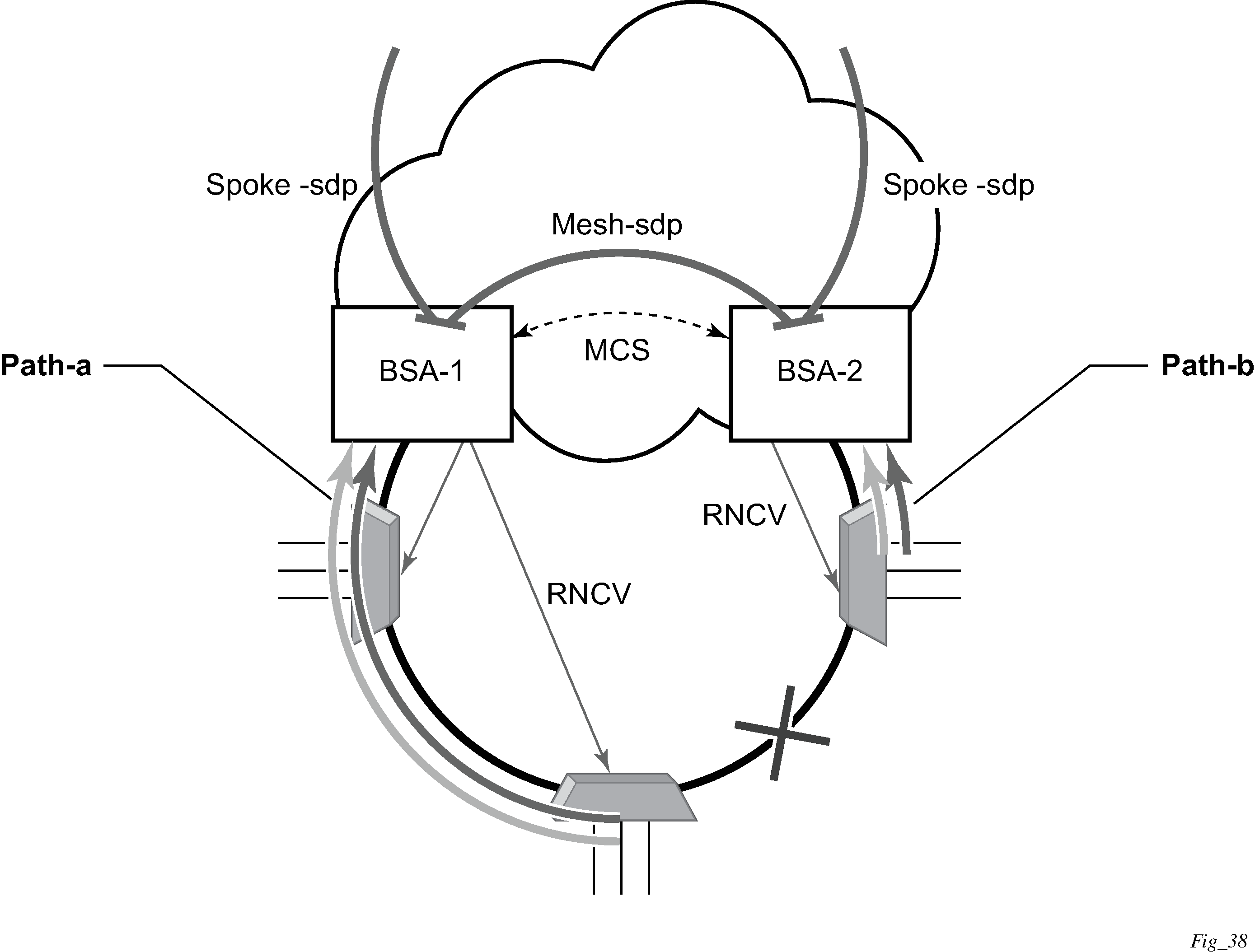Figure: Broken ring state illustrates the model with a broken ring (link failure or ring node failure). This state is reached in following conditions:
Both nodes are configured similarly.
Peering is up.
The multi-chassis ring is provisioned similarly between two nodes
IB-RCC is operationally down.
In this scenario, every ring node has only one access path toward the VPLS core and therefore, the Path-a and Path-b notion has no meaning in this situation.
Functionally, both BSAs are now the primary BSA for the reachable ring nodes and act as described in Steady-state operation of dual homed ring. For all hosts behind the unreachable ring nodes, the corresponding subscriber host FDB entries point to the shunt SDP.

The mapping of individual subscriber hosts into the individual ring nodes is complicated, especially in the VLAN-per-service model where a single SAP can represent all nodes on the ring. In this case, a specified BSA can have subscriber hosts associated with the specified SAP that are behind reachable ring nodes as well as subscriber hosts behind un-reachable ring nodes. This means that the specified SAP cannot be placed in an operationally down state (as in a closed ring state), but rather, selectively re-direct unreachable subscriber states to the shunt SDP.
All SAPs remain in an operationally up state if the ring remains broken. This mainly applies for BTV SAPs that do not have any subscriber hosts associated with and do not belong to any particular ring node.
To make the mapping of the subscriber-hosts on the specified ring node automatically provisioned, the ring node identity is extracted during subscriber authentication process from RADIUS or from a Python script. The subscriber hosts which are mapped to non-existing ring node remain attached to the SAP.
At the time both BSA detect the break in IB-RCC communication (if BFD session goes down) following actions are taken:
Both nodes trigger a RNCV check toward all ring nodes. The node, which receives the reply first, assumes a primary role and informs the other BSA through an out-of-band channel. This way, the other node can immediately take actions related to the standby role without waiting for an RNCV timeout. Even if the other node receives an RNCV response from the specified ring node later, the primary role remains with the node that received the response first.
After assuming the primary role for hosts associated with the specified SAPs, the node sends out FDB population messages to ensure that new path toward the VPLS core is established. The FDB population messages are sourced from the MAC address of the default gateway used by all subscriber hosts (such as the VRRP MAC address) which is provisioned at the service level.